The 3 secrets of Parisian flan
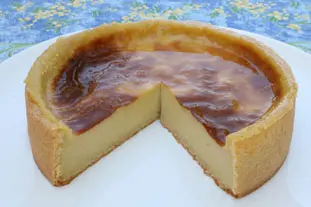
A flan Parisien, or boulanger, is a simple yet delicious cake. A cream, a mixture of milk, eggs and sugar, is poured into a raw pastry base and baked in the oven until the pastry and cream are cooked.
This is the simplest version of the recipe, probably the original one, but nowadays the cream has changed, and the flan has become a slightly more sophisticated cake, but still delicious, if well made.
Well, here are 3 important points to help you make a good flan.
This is the simplest version of the recipe, probably the original one, but nowadays the cream has changed, and the flan has become a slightly more sophisticated cake, but still delicious, if well made.
Well, here are 3 important points to help you make a good flan.
15 K 4.7/5 (12 reviews)
Keywords for this post:FlanPastryBakeryParisianDoughApplianceMilkCreamEggLast modified on: July 21th 2023
The 3 secrets of Parisian flan
I'll admit it, I'm passionate about flan - I love making it, eating it and talking about it :-).
And to try and get to the bottom of the flan recipe, we're going to look at 3 aspects of it: the dough, the cream to be poured into it (or apparatus), and the cooking.
Traditionally, shortcrust pastry is used, but nowadays we don't hesitate to use sweetcrust pastry (sweeter), puff pastry (crispier) or croissant pastry (crunchier and more delicious).
A flan needs to be thick, much thicker than a tart, and you leave it in the fridge while you work on the mixture.
If you choose puff pastry or croissant dough, I recommend sprinkling a little sugar (about 1 tablespoon) in the bottom of the mold before the dough, as it will caramelize during baking and further enhance the crispness of the pastry.
Proceed in much the same way as for a crème pâtissière: once all the ingredients have been mixed, put on a low heat, stirring constantly until the mixture thickens slightly to reduce baking time and avoid soaking the pastry base with a too-liquid mixture.
To finish, add a little butter and smooth with a mixer. You can find the recipe for the flan maker here.
The basic recipe is a classic vanilla flavor, but you can adapt the recipe to your taste: chocolate, pistachio, lemon, apple, sesame... among others.
A flan should always be placed low in the oven, so that the underside cooks more thoroughly.
If you've pre-cooked both the pastry and the appliance, the cooking time for the two together will be shorter, so keep an eye on the color of the pastry to know, and don't be overly influenced by the shaky texture of the appliance, which is already cooked and will solidify as it cools.
As you can see, it's not a very complicated recipe, but what a result! And above all, what a difference in taste and texture, compared with those poor-quality industrial flans that are unfortunately to be found just about everywhere.
Unfortunately, it's not uncommon to find frozen custards in poor bakeries and other shops, or custards prepared from "mix", i.e. a powder to which milk, or worse, water, is added, to obtain a mediocre mixture which will fill an equally mediocre dough, sometimes made from palm oil...
Of course, these flans are not expensive, which is always suspect, but what a pity for the taste and quality of the products.
To a lesser extent this time, some bakers tend to neglect, or botch up a little, their flan apparatus for economic reasons, and therefore rather top their pastry base with custard than with an apparatus. It's understandable (economically speaking), but it's a shame, because a good bakery should have a good flan.
To make a good flan, you need :
It's up to you!
And to try and get to the bottom of the flan recipe, we're going to look at 3 aspects of it: the dough, the cream to be poured into it (or apparatus), and the cooking.
1) The pastry
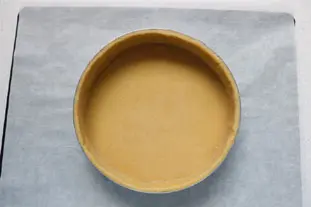
Traditionally, shortcrust pastry is used, but nowadays we don't hesitate to use sweetcrust pastry (sweeter), puff pastry (crispier) or croissant pastry (crunchier and more delicious).
A flan needs to be thick, much thicker than a tart, and you leave it in the fridge while you work on the mixture.
If you choose puff pastry or croissant dough, I recommend sprinkling a little sugar (about 1 tablespoon) in the bottom of the mold before the dough, as it will caramelize during baking and further enhance the crispness of the pastry.
2) The mixture
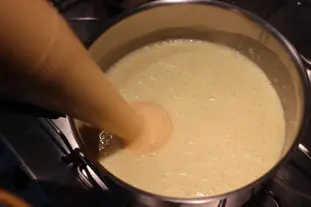
Proceed in much the same way as for a crème pâtissière: once all the ingredients have been mixed, put on a low heat, stirring constantly until the mixture thickens slightly to reduce baking time and avoid soaking the pastry base with a too-liquid mixture.
To finish, add a little butter and smooth with a mixer. You can find the recipe for the flan maker here.
The basic recipe is a classic vanilla flavor, but you can adapt the recipe to your taste: chocolate, pistachio, lemon, apple, sesame... among others.
3) Baking
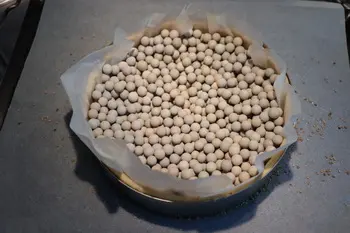
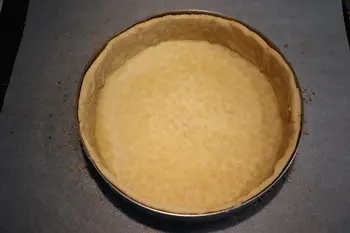
A flan should always be placed low in the oven, so that the underside cooks more thoroughly.
If you've pre-cooked both the pastry and the appliance, the cooking time for the two together will be shorter, so keep an eye on the color of the pastry to know, and don't be overly influenced by the shaky texture of the appliance, which is already cooked and will solidify as it cools.
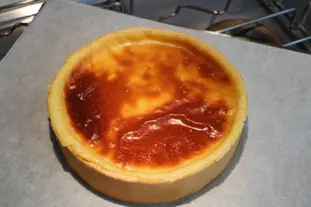
The flan and its aberrations
As you can see, it's not a very complicated recipe, but what a result! And above all, what a difference in taste and texture, compared with those poor-quality industrial flans that are unfortunately to be found just about everywhere.
Unfortunately, it's not uncommon to find frozen custards in poor bakeries and other shops, or custards prepared from "mix", i.e. a powder to which milk, or worse, water, is added, to obtain a mediocre mixture which will fill an equally mediocre dough, sometimes made from palm oil...
Of course, these flans are not expensive, which is always suspect, but what a pity for the taste and quality of the products.
To a lesser extent this time, some bakers tend to neglect, or botch up a little, their flan apparatus for economic reasons, and therefore rather top their pastry base with custard than with an apparatus. It's understandable (economically speaking), but it's a shame, because a good bakery should have a good flan.
In a nutshell
To make a good flan, you need :
- The pastry of your choice (no obligation)
- A round mold with high sides (mine is 20 cm long and 4.5 cm high)
- A small amount of powdered sugar
- Pre-bake the pastry on its own
- Pre-bake apparatus
- Bake at the bottom of the oven
It's up to you!
Lasts posts
Butter vs. grease
We often read in a recipe where a pastry is put into a mould that, just before pouring, the mould should be buttered or greased. But what's the difference between these 2 terms?December 1st 20255765
Getting out of the fridge early
Very often when you're cooking, you need to take food or preparations out of the fridge, to use them in the recipe in progress. There's nothing tricky about this: you just take them out of the fridge and use them, usually immediately, in the recipe. But is this really a good method?November 24th 20259285
Who's making the croissants?
When you look at a bakery from the outside, you naturally think that in the bakery, the bakers make the bread, and in the laboratory, the pastry chefs make the cakes. It's very often like that, with each of these professions having quite different ways of working, but sometimes there's also one...November 23th 2025830
Oven height
When we put a dish or cake in the oven, we naturally tend to put it on the middle shelf, and that's what we usually do. But in some cases, this position and height can be a little tricky, so let's find out why.October 8th 20252,4185
The importance of sieving
In recipes that use a fine powder (flour, powdered sugar, etc.), you'll often see the advice to sift before using it. To sift is to pass the powder in question through a sieve (a very fine strainer) before incorporating it into your recipe. It's often advice, but is it really useful?September 3rd 20257,3153
Other pages you may also like
Tranché, dissociated, failed, in short... missed!
When preparing a sauce or a cream, there's always a (small) risk that the creamy preparation you're working on will suddenly separate into two parts of different textures: a liquid part, for example, and a more or less solid part, or even become lumpy. It's terribly frustrating, but we'll see...June 19th 202312 K5
The dissociation of a preparation
It may have already happened to you: You prepare a sauce, a cream, a ganache etc. and then suddenly or almost, the whole thing dissociates, and from a smooth mixture that you were preparing with love, you end up with a horrible thing with a more or less solid part and another liquid part. It's...January 22th 202212 K4.9
Candied fruits: don't get ripped off
Do you like candied fruit? You might like to nibble a handful or add it to a recipe, like a classic fruit cake or delicious Italian specialities like panettone or sicilian epiphany pie.June 21th 201767 K 24.2
Coarsely chopped herbs
Although we are in the middle of winter as I write these lines, you should not hesitate to make salads at this time, it is actually quite simple, rather fast, and so pleasant. A while ago, I already told you that a salad is a salad, but a salad with herbs is immediately something much better:...January 9th 202114 K4.9
85 grams of eggs?
Some time ago, I already spoke to you about the difference between baking and pastry-making, I emphasized, among other things, the precision of pastry-making which requires grams, cm, degrees and minutes. That's why, on the one hand, you have baking and cooking, where a certain tolerance is...November 26th 201856 K4.6
Post a comment or question
Follow this page
If you are interested in this page, you can "follow" it, by entering your email address here. You will then receive a notification immediately each time the page is modified or a new comment is added. Please note that you will need to confirm this following.
Note: We'll never share your e-mail address with anyone else.
Alternatively: you can subscribe to the mailing list of cooling-ez.com , you will receive a e-mail for each new recipe published on the site.









